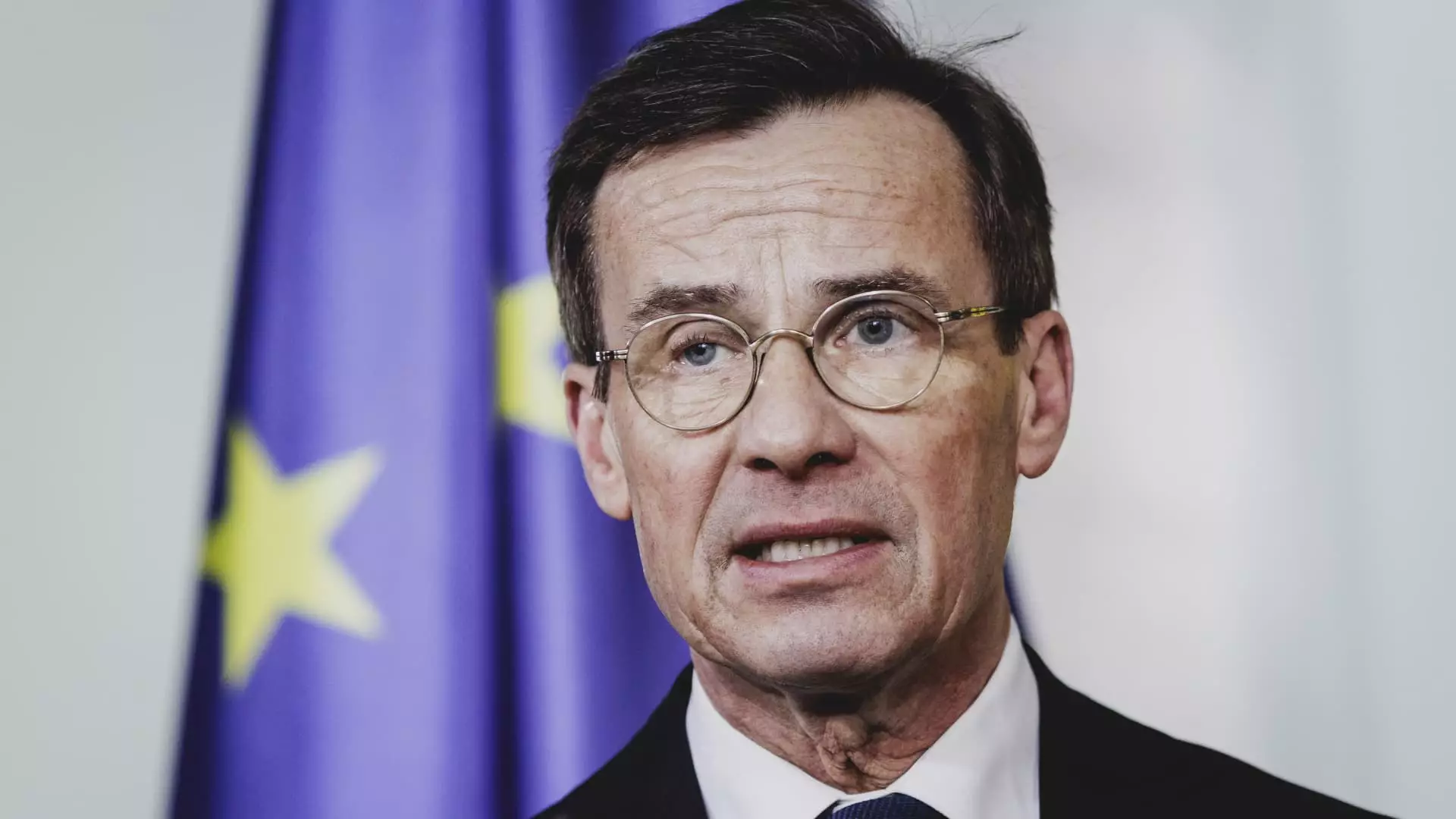In a rapidly evolving technological environment, Europe finds itself at a crossroads, facing the stark reality of its slow progress in artificial intelligence (AI) compared to global counterparts like the United States and China. Recent remarks by Swedish Prime Minister Ulf Kristersson at the Techarena event in Stockholm serve as a clarion call for change. He passionately argued that unless Europe softens its rigid regulations on AI technologies, the continent risks relegating itself to a mere “museum” status. This stark metaphor encapsulates the urgency of engaging with the dynamic landscape of global AI development.
Economic Implications of Inaction
The economic implications of maintaining a status quo are profound. Over the past two decades, the European economy has lagged behind its American and Chinese competitors, flagging in both innovation and growth. Kristersson’s assertions underscore a significant concern: without a shift toward a more accommodating regulatory framework, Europe may miss out on opportunities that can fuel economic resurgence. His statements resonate with a broader European sentiment, echoed by leaders like French President Emmanuel Macron, who recently announced a monumental €109 billion investment in AI—including commitments from both domestic and foreign investors.
This trajectory starkly contrasts a recent indication from U.S. Vice President JD Vance, who criticized Europe for its stringent AI regulations, accentuating the need for an environment that nurtures rather than stifles technological advancement. It is clear that a paradigm shift is necessary; Europe’s current regulatory stance poses hurdles for local businesses seeking to harness the latest AI technologies.
As Kristersson pointed out, the geopolitical landscape has transformed, and Europe must adapt to stay relevant. The growing competitive spirit in AI is evident, with the United States pushing to maintain its lead and China rapidly closing the gap. In this light, Europe cannot afford to operate under an overly cautious regulatory umbrella. The European Commission has proposed significant financial backing to offset these challenges, including a staggering €200 billion for AI investments across the continent. However, without the structural reforms to ease access to capital and talent, such investments may not translate into tangible growth or innovation.
Another significant concern is the exodus of local companies dissatisfied with the overly restrictive European landscape, often relocating to environments more conducive to innovation. As Kristersson expressed, the existing uncertainties surrounding European legislation create an atmosphere where local startups and established companies alike struggle to navigate their operational frameworks. This situation is untenable and could lead to a brain drain, undermining Europe’s long-term status as a technological leader.
Critics argue that the European Union’s AI Act, regarded as the first comprehensive legal framework to govern AI technologies, often errs on the side of caution, presenting an obstacle to rapid advancements. The Act was undoubtedly created with good intentions—to safeguard against potential risks associated with the misuse of AI. Still, it raises concerns about overregulation that could stifle innovation and discourage investment.
In contrast, a more measured approach that balances innovation with safety risks would be prudent. By fostering collaborative discussions with tech leaders and industry stakeholders, European leaders can gain insights that enable them to create a regulatory environment conducive to growth. The goal should be to establish a framework that assures the public while empowering entrepreneurs and innovators, striking a delicate balance between safeguarding societal interests and fostering market growth.
A shift in mindset is vital for Europe to thrive in the increasingly competitive global AI landscape. U.S. Vice President JD Vance’s remarks at the Paris AI Action Summit highlight the importance of international cooperation and a shared vision for the future. He urged European allies to embrace AI with optimism rather than fear, framing it as a pivotal frontier for economic growth and societal advancement.
Europe’s leaders must listen and learn from these perspectives while working to reshape policies that encourage innovation. Collaboration with tech giants, local startups, and research institutions could foster a culture of innovation that attracts investment and talent to Europe, positioning it as a lucrative hub for AI development.
Europe stands at a critical juncture; the choices made now will define its technological future. As leaders like Kristersson and Macron push for necessary reforms, the call for an agile regulatory landscape grows louder. Reassessing current regulations, fostering a collaborative environment, and nurturing an entrepreneurial spirit will be crucial in propelling Europe into a competitive position within the global AI arena. The time for action is now; Europe must choose to evolve rather than remain a stagnant relic of the past, or risk becoming that metaphorical museum that Kristersson fears.


Leave a Reply